We began playing out on my street, in North Shields, North Tyneside, six years ago, in December 2015.
I’d been living on this street for about four years and had a four year old daughter. I’d got to know a few of my nearest neighbours, to chat to briefly as we passed on the street, to share stories of our children, to maybe borrow a missing ingredient. I had the sense that more and more families with young children were moving on to the street, including, coincidentally, two I’d met through baby and toddler groups.
Somehow in October 2015 I googled “playing out” – I don’t know why, and even how I knew this was a thing, but I must have seen something about the idea, probably on social media, possibly in a news article somewhere. I’ve always been interested, personally and academically, in the idea of our most proximate everyday environments and what the relationships in these places mean, so it wasn’t completely out of blue that I’d connected somehow to the idea of neighbours meeting and playing on their streets. What was a surprise to discover, as I searched, was that North Tyneside was piloting a play streets project in 2015, supported by Playing Out, the social enterprise emerging out of the activism of a handful of mothers in Bristol, and Play England.
So I emailed Diane at the House of Objects, the organisation leading the pilot here in North Tyneside, on 6th October 2015, and arranged a meeting for my neighbours. With a bunch of us keen to go ahead, Diane applied to the council on our behalf and we planned for our first “playing out” session on 13th December 2015. I think we were the fifth North Tyneside street to get started; only one other of these pilot streets is still going and celebrated its sixth anniversary in October.
That first session was a huge success. It was December, so cold, but it was dry, and we made hot chocolate for the kids and mulled wine for the adults, and we played for three hours, until it was dark. Diane said she thought our session “one of the best to date” – and she asked us for some feedback and quotes to promote the scheme. This is what I sent her:
“there must have been between 15 and 20 families out, with about 30-40 children. The atmosphere was fantastic – one dad said “The sound of laughing and shouting kids echoing up the road will stay with me for a long time.” The kids played happily with each other for the full three hours, no squabbles, no accidents, just lots of scootering, cycling, football, trampolining, drawing with chalk, blowing bubbles and facepainting. My 4 year old daughter said “I liked scootering on the road the best”. Everyone said what a fantastic idea it was – and everyone’s up for planning the next.”
So we planned more – every four weeks, and sometimes every other week, from January 2016. Our regular pattern has been one Sunday afternoon a month, but for the last three years or so, during the summer months, we’ve also played out after school on Mondays or Fridays once a month, and we’ve had additional sessions for occasional street parties and special dates like Halloween. I reckon since December 2015 we’ve played out more than 70 times, over 200 hours of neighbours playing, hanging out and chatting. Before the pandemic, we’d cancelled just a handful of sessions, either because it was raining just too hard or because too many neighbours were away (usually in the middle of the summer holidays).
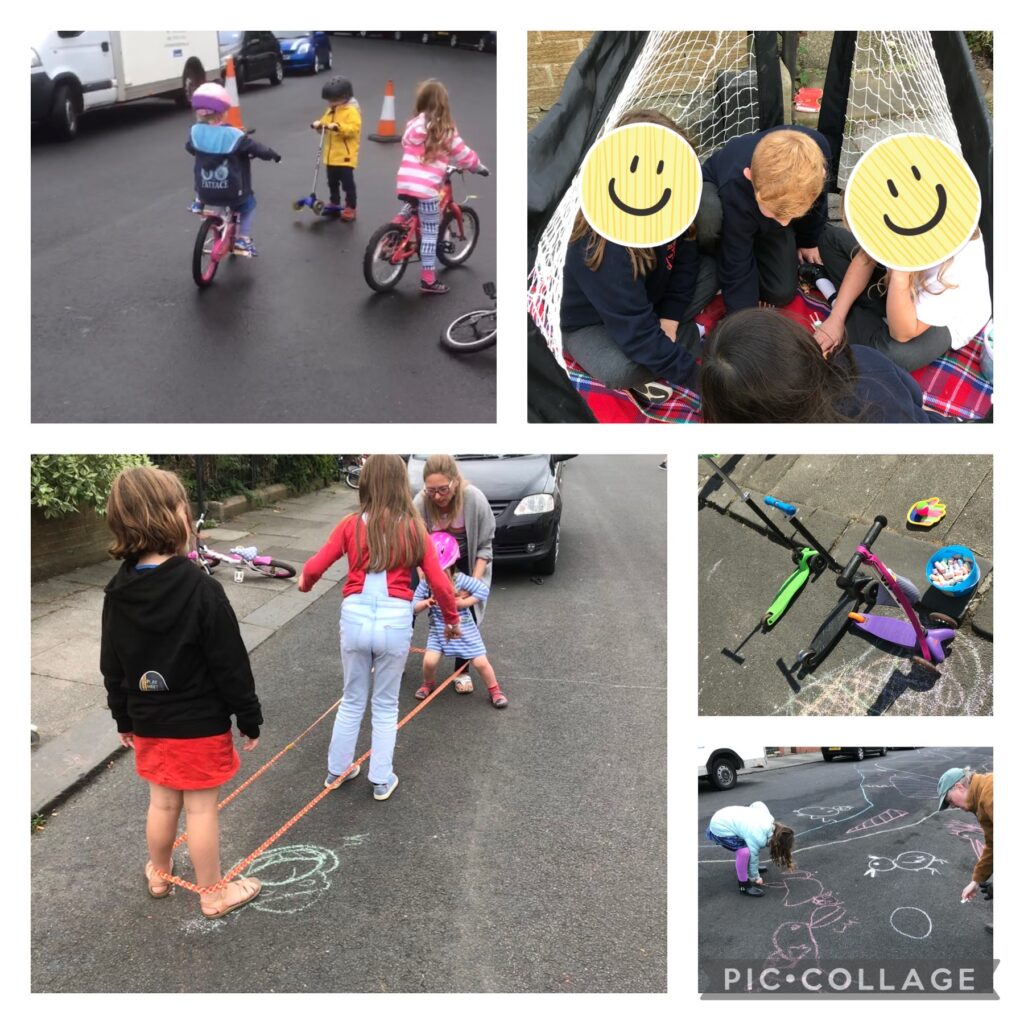
There’s been scooting, chalking, skipping, cycling, football, bug hunts, races, hopscotch, tennis, apple bobbing, sprinklers, “elastics”, fancy dress, pancakes (cooked on the street!), crawling, falling (not too much!), noughts and crosses, tents, impromptu stalls, talent shows, biscuits, crisps, sweets, the ice cream van, charity bakes, hand-me-downs of all kinds (bikes, clothes, books, toys), lots of sitting (on the road, on walls, on the kerb), laughter, some crying, chatter, squeals, a bit of shouting, some music, bubbles, sparklers, and much much more.
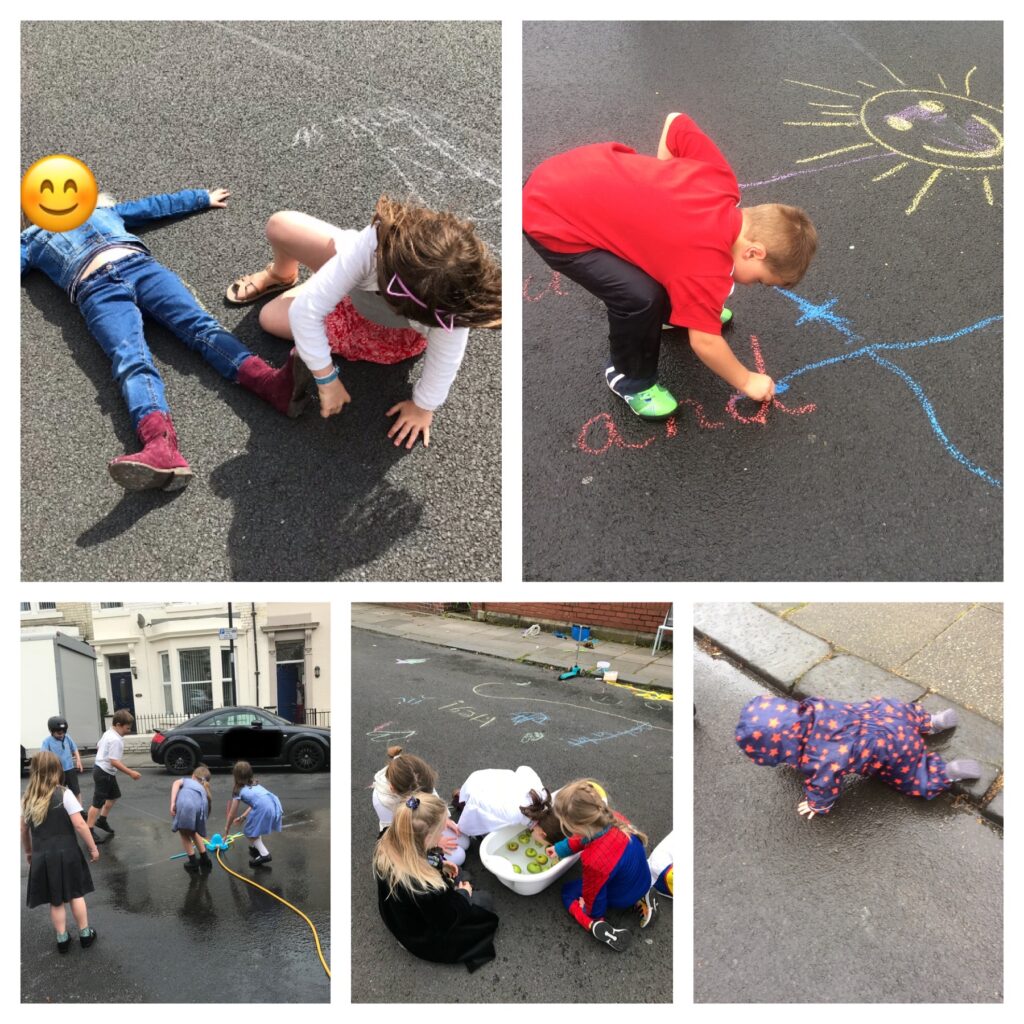
Dozens of neighbours – of all ages – have got to know each other, have played together and hung out, watching the children play. New neighbours have moved in, children have been born. We’ve made friends, lent and borrowed, shared childcare, recommended plumbers, roofers and electricians, moaned together about parking and the weather, and just to got know each other a little better, a little more.
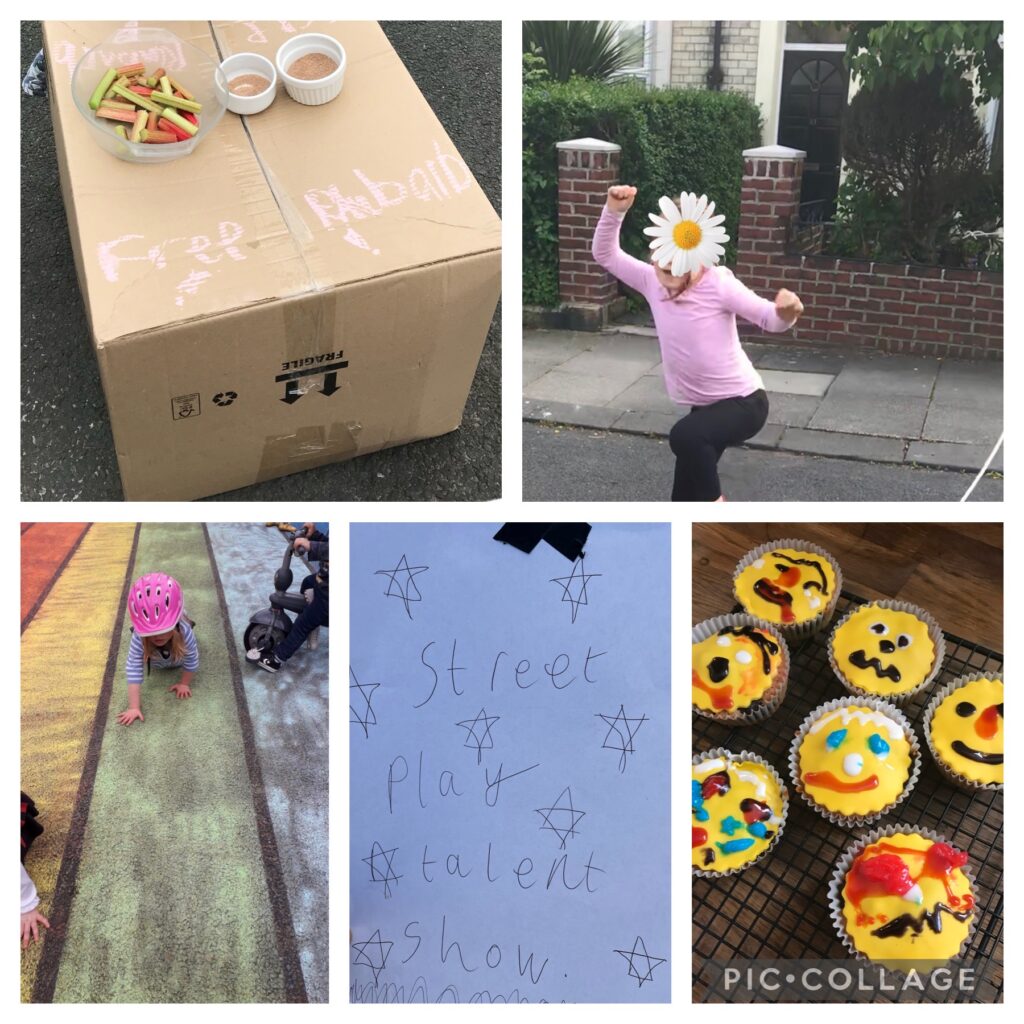
It’s all generally been pretty conflict-free. We’ve had, I think, three or four minor complaints in the six years we’ve been running, and none of these have been insurmountable. We’ve had a couple of drivers try to barge through the barriers, but none of those incidents escalated.
This has been a part of my daughter’s life for more than half of her 10 years. As I suggested, there are children who’ve been born since we started, who just know this as a taken-for-granted part of their life, who crawled on the street from the moment they could move. These children know this street is theirs, but I’m not sure they know how special it is. They play together, children of different ages, showing each other how to play, what to play, taking care of each other, and sometimes bossing each other around.
That my daughter has grown up is sign of change on the street; we’ve already seen a cohort of children ‘graduate’ from playing out, to hanging out, to moving relatively freely beyond the street, and my daughter is now close to that. Most of the group of parents who got this started now have children in, or on the brink of, secondary school. Some of those older children have been playing out – playing football or skateboarding, or just hanging out in front gardens – outwith our play streets sessions for a few years now. It seems to me, at least, that our play street sessions have made a real difference to our children’s sense of their street and their place on it.
Of course, the pandemic has been important too. We missed out on over a year of playing out. We managed one last session in mid-March 2020, unsure whether we should be going ahead, but reluctant to give up. And we managed a couple of sessions in late summer 2020 (August and September) before the “rule of six” was introduced and all play streets sessions were paused again. As we moved into 2021 with another lockdown, I recognised just how much I was missing our regular play streets. We finally restarted in May 2021, on the first Sunday we had permission to do so – I’ve written about restarting here.
But, we didn’t stop being a play street. All the relationships we’d created – including a Facebook group – helped us weather the pandemic. Within days of the first lockdown being announced, we’d set up a network of neighbours to check in on and support the more vulnerable amongst us; we shared toys, films, jigsaws, and seeds; and lockdown clearouts led to bricks, old furniture, sandpits, timber, and much more being passed on along the street. One neighbour took doorstep photos, arranged for a puppet rainbow to visit the street, and persuaded one of their friends to deliver regular takeaways to the street. And two sets of balloons moved between half a dozen lockdown birthdays. Oh, and I started chalking regularly on the pavement and the street – hopscotches, trails, rainbows, random messages, plant names, and much more – and leaving chalk out for passers-by to play with or to take elsewhere.
Some of this might have happened anyway – surprising things happened on streets around the world during the lockdown – but I’m pretty sure lots of it happened because we were already a play street.
We celebrated our sixth anniversary, in the rain, with a scavenger hunt, organised by my daughter and her friend who were both just 4 when we started, and with mince pies and chocolates.
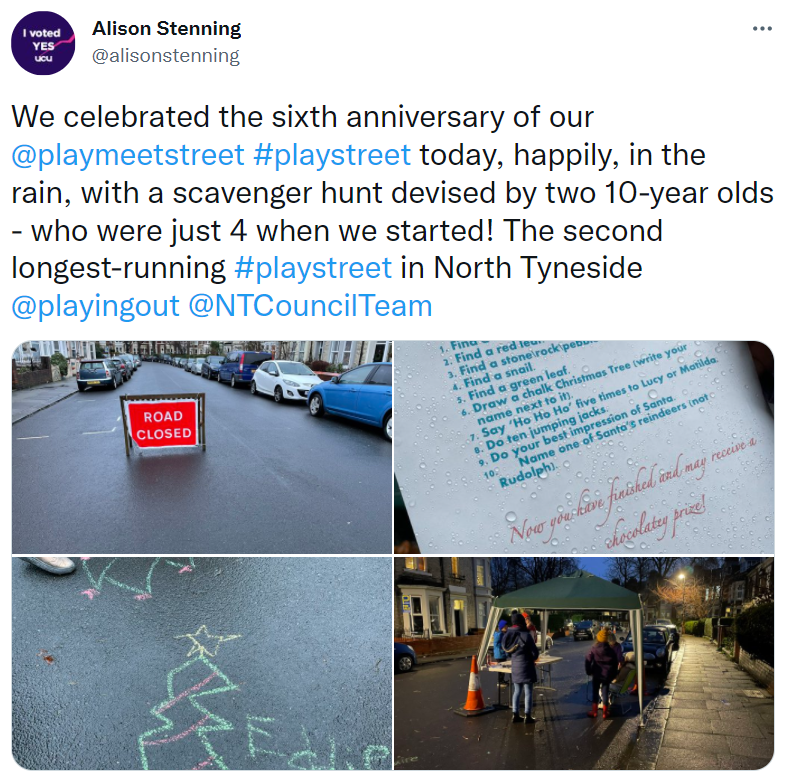
Starting to play out on my street has certainly been transformative for me – I now spend a big part of my life organising, developing, supporting play streets with PlayMeetStreet North Tyneside and researching them as a geographer at Newcastle University, as various posts in this blog explain. But it’s also transformed my relationship, and my daughter’s, with our street. We know our street – the people and the places on it – so much better. We feel at home on it.
Closing a street for play seems like a simple and inoffensive act, but it also still feels quite radical. For a few hours every month or fortnight, my neighbours and I shift the focus of our street away from cars to people, of all ages, and we do frivolous things on it. It feels good, even magical (I talked about the magic of play streets in this recent podcast.)
What this will all mean in another six years’ time is an open question. What will it mean for my daughter as she grows up that she had these experiences in her formative years? When she’s 16, how will my interest in and motivation for play streets have transformed and developed?
For now, I’m chuffed we did this, that we kept going, that we gave this to our children, and to ourselves.

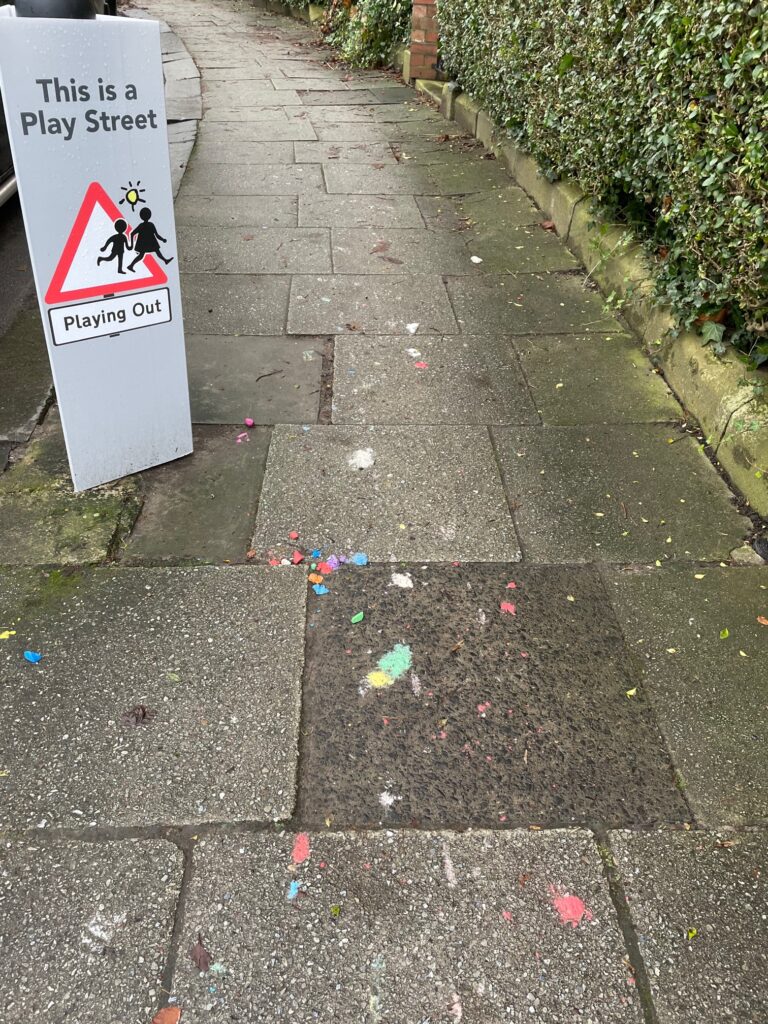

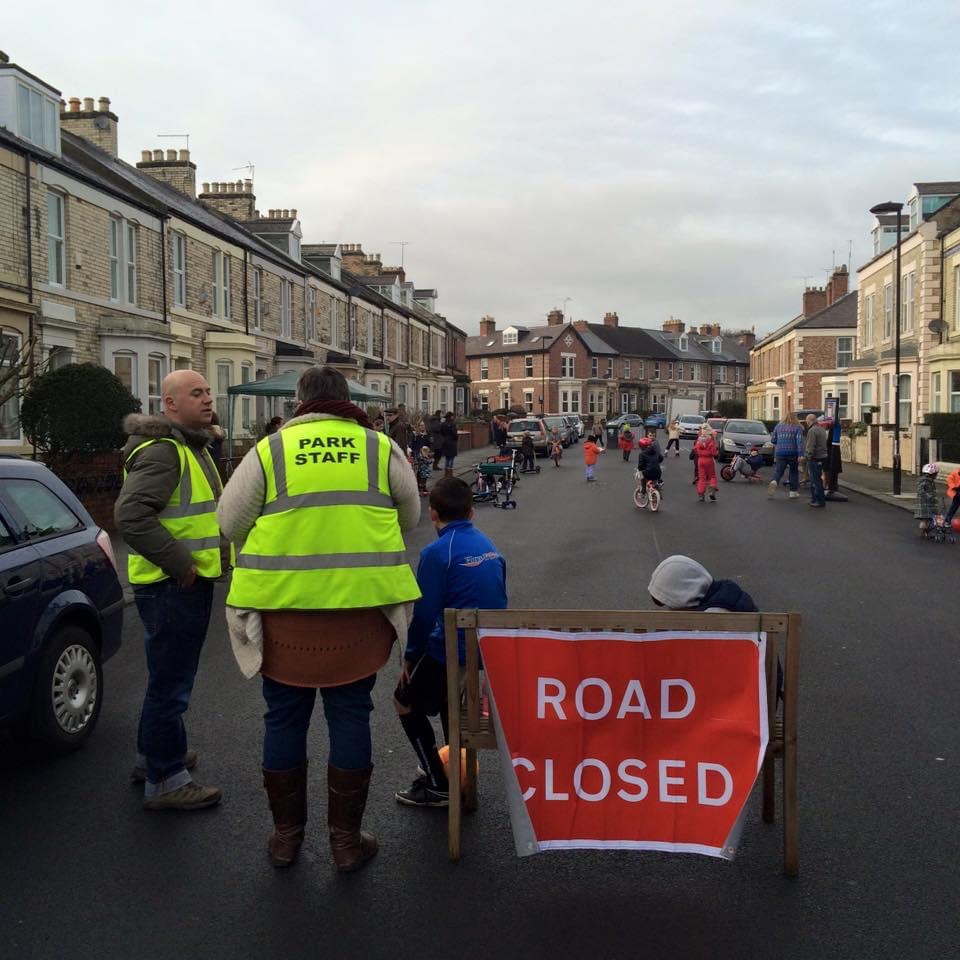

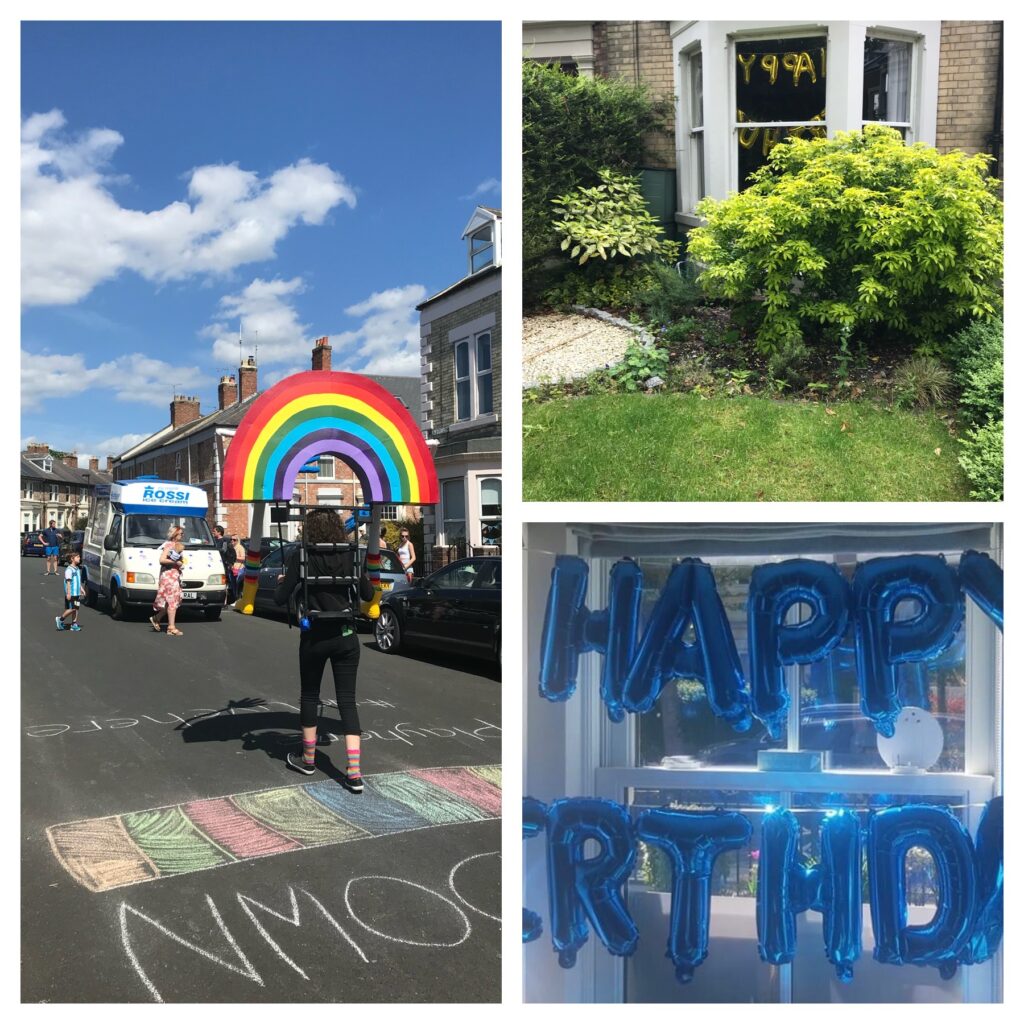
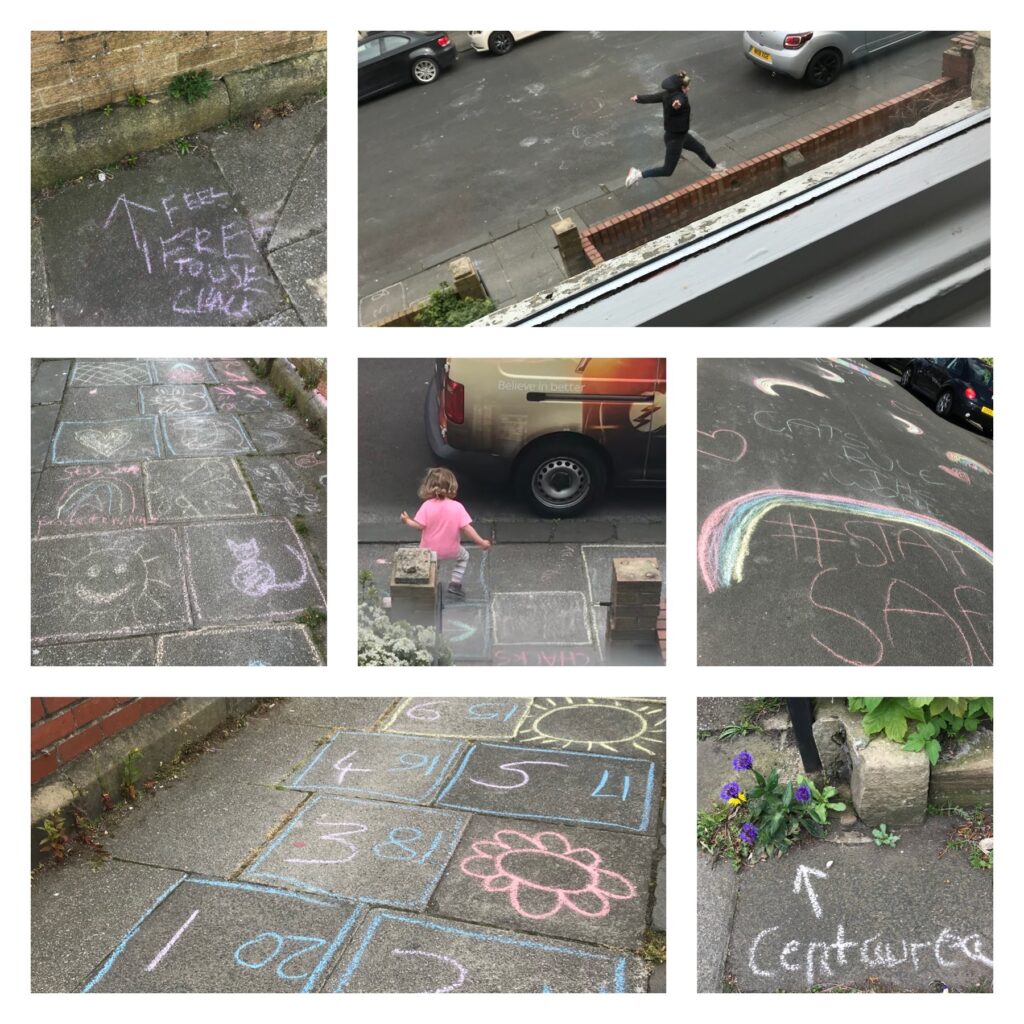
I want a community like that in my B road!
I remember playing marbles in the gutter on the way to school. Skipping ropes tied to the lamp posts.
And then closed cars came, separating people, and socially divisive.
[Beautifully written, btw! You might enjoy “Town Mouse” on WordPress by @sallyhinch aka disgruntled.]